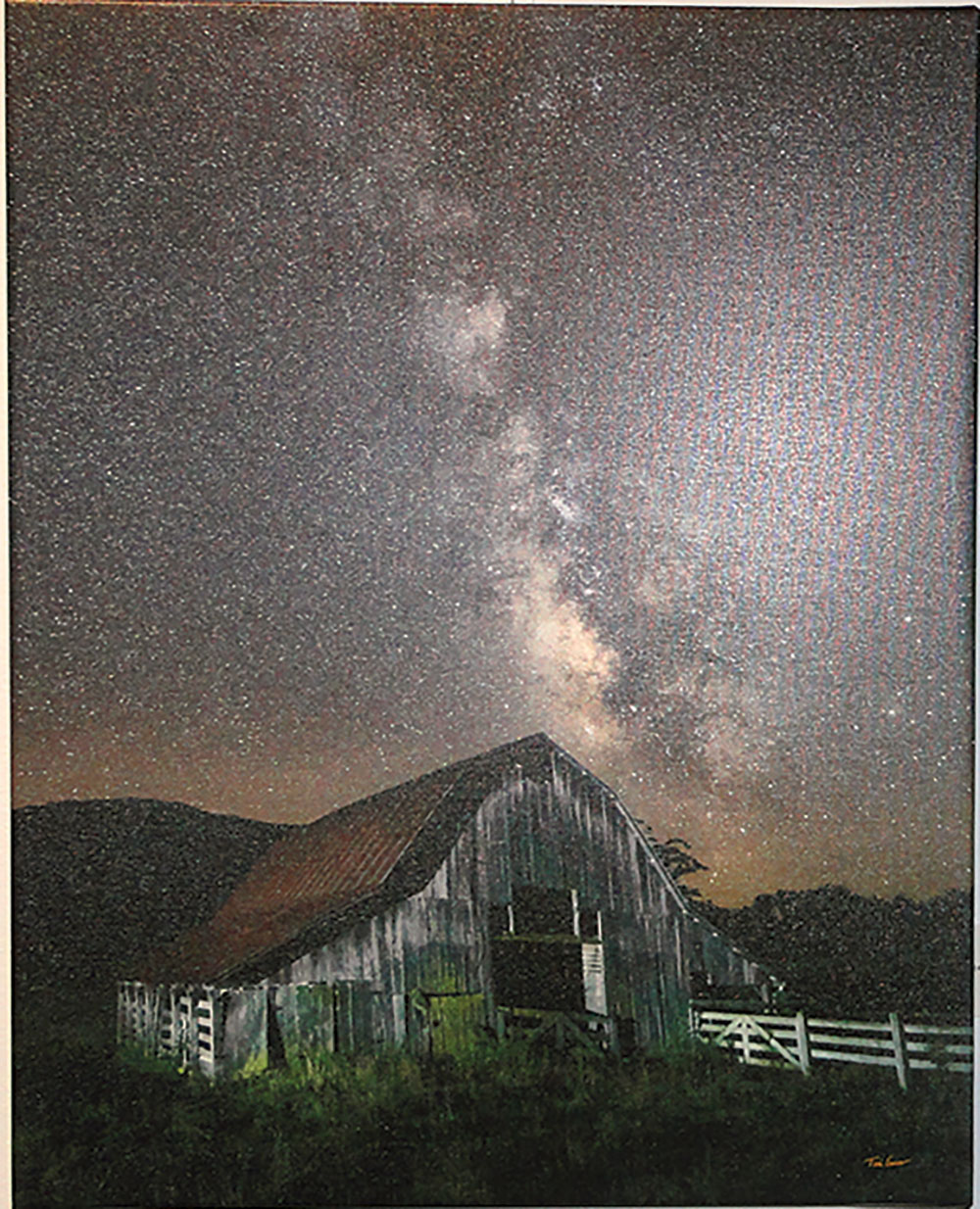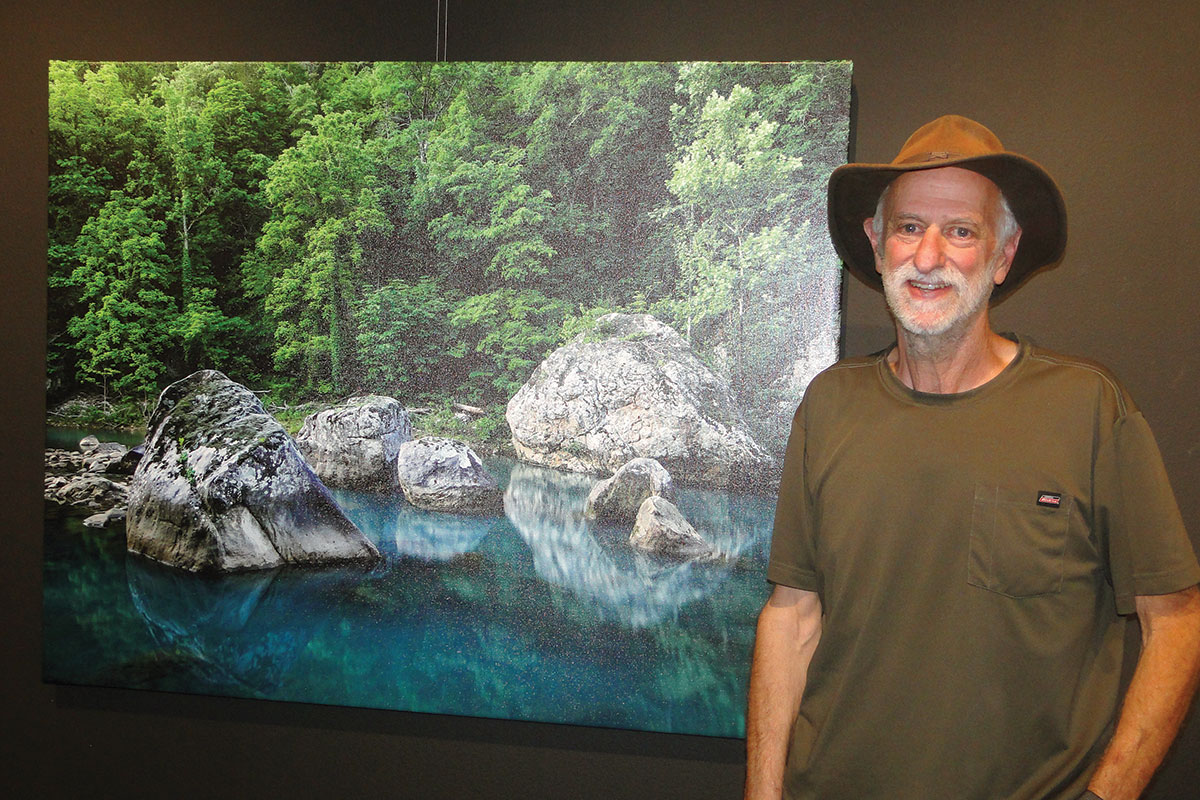 A hunting trip and the words of an epic traveler sent Tim Ernst and his camera to the forrest
A hunting trip and the words of an epic traveler sent Tim Ernst and his camera to the forrest
Well-known naturalist and photographer Tim Ernst of Jasper, Ark., grew up at the edge of Fayetteville, when forests covered the area and he had miles and miles of rugged land as his backyard.
His brother Terry, a BB gun and a huge tricycle that was a precursor to mountain bikes were his best friends. When he was 7, his father George took him to a deer camp where he was surrounded by what he called “old people” in a military tent sharing stories and good food more than hunting deer, because deer were scarce at the time. He had a World War II German 8 mm Mauser and had to brace himself just to keep his feet when he did shoot.
The wilderness called to him and he was always a reluctant student. In fact, he didn’t read a book “cover to cover” until his senior year in high school.
At the time, “The High Adventure of Eric Rybak” was a recently published personal account of an 18-year-old youth becoming the first to travel the entire Pacific Crest Trail from Canada to Mexico. A young Tim quickly identified with the solitary and often unmarked trek through rugged and beautiful terrain and was selected as one of only four seniors chosen to read his book report at a senior assembly.
“That book changed my life,” Tim declared.
The book spoke to him and he overcame his indifference to academics. Tim also worked for the Forest Service and was selected as one of 32 out of thousands. He worked as a cave tour guide, which worked for him because he didn’t have to repeat a script but could use impromptu passion in its place.
According to Tim, he paid tuition at the University of Arkansas for three years, and he swam for the Razorbacks for six months. However, the call of the wild was stronger than anything else, with academics seeming inconsequential for how he wanted to live his life.
During his freshman year in high school, he got his first camera and took a picture of a sunset. Hunting had introduced him to nature in a different way but the picture ended up capturing him. Later that same year he and Terry started teaching backpacking, canoeing and rock climbing in a noncredit class.
Remembering the book from his senior year, Tim soon decided to backpack across Arkansas though no map existed. Without a compass, he followed drainages and ridge tops on a route that is now an established trail. A college degree was not in his future but that first year set the course of his life. He was a nature man with two passions: photography and trail making.
Tim’s photographic career began by taking impromptu photographs of sororities and fraternities. Their contracts for traditional fraternity pictures were about to expire and they loved Tim’s pictures best. He and a friend then began a fraternity/sorority photo business that also included wedding and other events, which he eventually sold to his partner. The first photograph he had published was a black and white photo reminiscent of Opie and Andy Griffith walking down a country road.
“The photography business is difficult, but I often seem to be in the right place at the right time,” Tim explained.
An example is a picture he took after the major eruption of Mount Helena in Montana. He was in a plane flying around the mountain when they got an urgent message that it was about to blow again. The pilot took immediate action but Tim turned around and got an amazing photograph of the billowing gas cloud eruption.
Despite his humility, Tim published major calendar covers that eventually led to his taking pictures for the National Geographic story on the Buffalo River. Once he entered a photography contest and didn’t even get an honorable mention, but that same picture was used on four covers, as well as being included in other published sources.
Meanwhile, Tim was hired to take photographs of trail building in 1980 and found insufficient funding existed to finish the trails. He came up with the idea that perhaps volunteers could build the trail if the Army Corps of Engineers helped with tools and equipment. The trail was built with Tim becoming the coordinator, soon thereafter beginning a club still in existence today. His first book was “Ozark Highlands Trail Guide” and sold thousands of copies. More people were interested in trails than he ever dreamed. A later edition contains a forward written by then-Gov. Bill Clinton who signed a copy as his first signature as president, which earned the book a gold seal and immediate acceptance. To date, Tim has published 19 books divided between trails and photography.
Of all the photos he has taken, Tim has a favorite. “It’s the one someone walks out of his gallery with. I love standing there and seeing a picture work because bringing somebody to tears is my best reward,” he said.
Much like Monet, the famous impressionistic painter, Tim believes light more than anything else in creating a memorable view. The slight bend of a tree in the wind or a cloud half covering the sun for a few seconds opens a momentary window into nature and people’s souls.
Tim continues to pursue both of his loves. He offers photography classes and is currently offering slideshow presentations across the state explaining his newest photographic book Arkansas Splendor.







